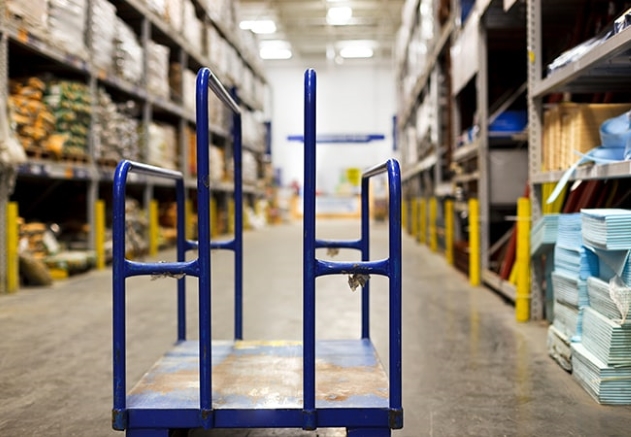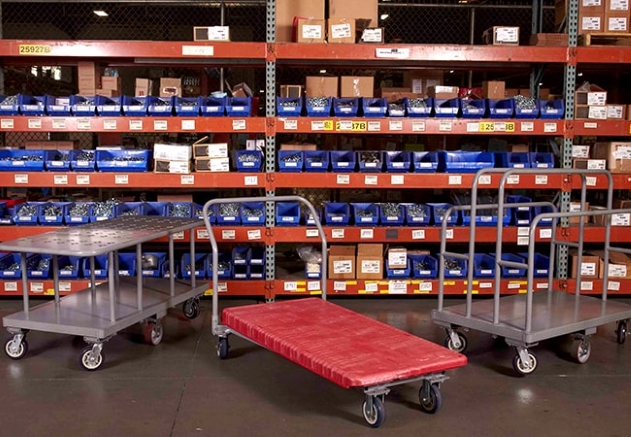The Whats and Hows of Utility Wagon Carts
You’ve seen them in restaurants, hotels, at functions, on aeroplanes, in hospitals, offices and schools. They are also found in warehouses, workshops, mailrooms, kitchens and shops. Yes, I’m talking about the versatile utility cart. They’re an indispensable item in carrying a range of objects safely, quickly and in an organised way. Some are lightweight, foldable and moved easily out of the way when not needed. Others are heavy-duty, can take a beating, and still turn up for work every time.
Before setting out to get the first utility wagon cart you see, there are a few things to consider. You may want a general-purpose cart that you can use in more than one setting, say both at home and at work, or one that’s better suited to a particular task. Next, you’ll have to think about which items you’ll be usually using the utility cart for, how heavy they are, and whether the cart is up to the task. Lastly, consider where the cart will spend most of its time, as things like materials, features, and portability all play a part in your choice.

Materials – Metal, Plastic or Wire Mesh
Metal carts are either steel or aluminium, are often coated to last in any environment, and can haul exceptionally large and heavy loads. They have some of the highest loading capacities, so are perfect for heavy-duty applications where durability and overall strength are needed. One downside to consider is the weight, as all the benefits come at a weight cost.
If pushing 30 odd kilos of an empty metal cart is not exactly up your alley, then consider getting a plastic utility cart. These are made from thick reinforced plastics like polypropylene which doesn’t pick up dents or scratches. They also handle wet conditions much better than either steel or aluminium and don’t rust. The positives don’t end there. Despite being extremely lightweight (bigger carts top out at 10 kilos), they have comparable loading capacities to most metal carts, but are much easier to move around.
There are dozens of carts that mix and match plastics and metals in all the right places. This brings down the weight without limiting how much you can carry.
Wire mesh carts offer the durability associated with metal, but with better epoxy coatings that stand up against corrosion. As such they don’t collect dust or liquids and are preferred in areas like kitchens, laundries and gardens. They’re also much lighter, but can’t match the most durable metal utility trolleys for sheer carrying capacity.
Storage and Organisation
The number of shelves determines the items you can carry. Carts with more shelves are better for smaller items (and more of them), and those with 2 shelves for larger and heavier items. The latter is also more robust, and as a rule, has a higher carrying capacity per shelf.
Different design features help with easier loading and transport. For instance, flush top shelves make loading and unloading heavier objects that much quicker. The same cart can have a lipped shelf at the opposite end to ensure that that item stays put when moving the cart. There are also utility carts with side lips on all sides for carrying several taller objects at a time. And, when you need quick access to equipment and gear, go for carts with sliding shelves.

Some carts have tubular frames that hold storage baskets and bins. You’ll see these in schools and offices for carrying stationery as well as parts and tools in workshops or clothing in laundries.
If you need secure storage then look to carts with lockable drawers and cabinets. Like shelves, there are endless configurations here. More common are carts with top-loading drawers and those that are fully enclosed with lockable doors on all sides. Designs differ according to the settings and what the cart is used for.
Portability
Handles on a utility wagon cart project out of the frame, usually from the top shelf. They can be horizontal, vertical or set at an angle. Handle height will affect comfort and safety, so decide what works best for you. As for pushing a loaded cart, look for surfaces and materials that are grippy without causing pain after prolonged use.
Castors and wheels take all the weight, so need to be made of durable materials. Rubber castors are grippy on a range of different surfaces, are often unmarked, quiet and absorb shocks. More durable are polyurethane and nylon castors which are ideal for heavier loads. For heavy-duty industrial use look for cast-iron castors as these can also stand up to high temperatures.
Castors are either swivelling or fixed (or a combination of both) to allow for easy maneuvering and greater safety. This is greatly improved with locking brakes, especially on uneven surfaces.
Which Utility Cart is Right for You?
With prices varying greatly, you’ll want a utility cart that ticks all the boxes. Look for durable build and materials that can withstand daily use in harsher environments, carts that are easy to load and move around, and with enough storage space for the loads you usually carry. Size, weight and loading capacities are some of the more important factors when choosing, but don’t overlook ergonomics and safety features.



